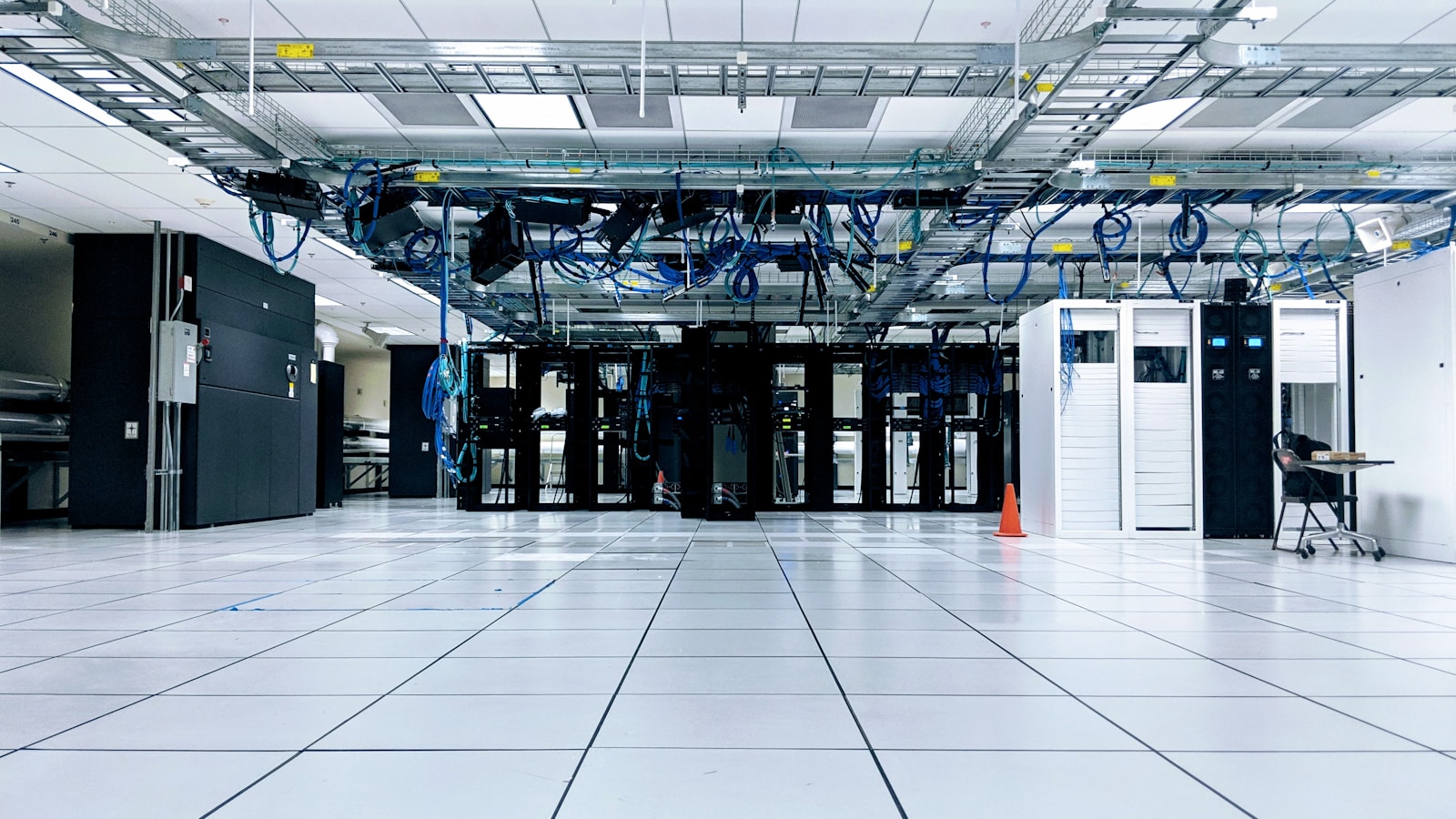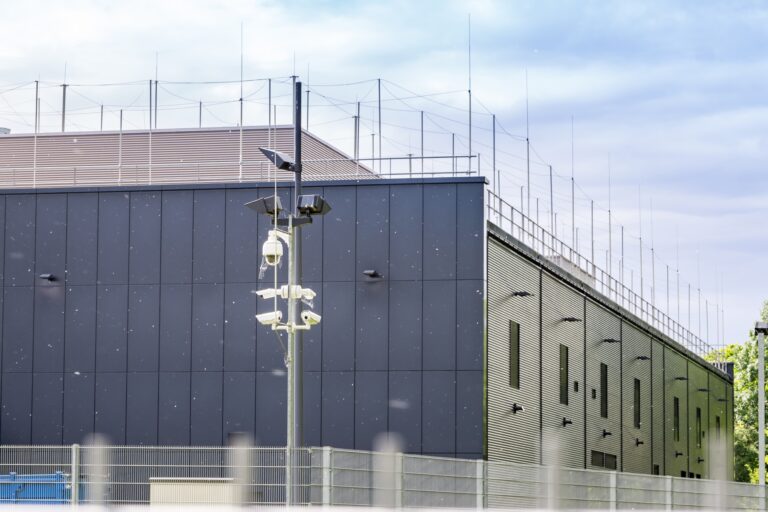As technology changes fast, businesses must prepare for growth. The key is building infrastructure that scales, so it keeps up without costing too much or losing performance. Designing for scalability from day one makes all the difference.
According to recent industry data, over 20% of current data center capacity is now dedicated to AI workloads, with enterprises competing fiercely for new capacity. This surge in demand has made scalable infrastructure design not just a best practice, but a business need.
What Does Scalable Infrastructure Really Mean?
Scalable infrastructure means systems that can handle more or less work without losing quality, performance, or service level agreements (SLAs), which are contracts that set uptime and performance promises. It’s the difference between building a foundation that crumbles under pressure and one that adapts and strengthens as demands grow.
Think of it like designing a highway system. You don’t just build for today’s traffic. You plan for future growth, alternative routes, and the ability to add lanes when needed. The same principle applies to data center infrastructure.
The Two Types of Scaling
- Vertical Scaling (Scaling Up): Adding more power to existing machines: more CPU, RAM, or storage to a single server. While simpler to implement, it has physical limitations and creates single points of failure.
- Horizontal Scaling (Scaling Out): Adding more machines to your resource pool. This approach offers better fault tolerance, unlimited growth potential, and is the preferred method for distributed environments.
Core Principles of Scalable Infrastructure Design
1. Modular Architecture: Building Blocks for Growth
Scalable infrastructure starts with modular design. Instead of using all-in-one systems (monolithic systems), successful organizations deploy standardized, interchangeable parts. These parts can be easily added, removed, or upgraded as needs change.
Key Benefits of Modular Design:
- Faster deployment times (up to 50% quicker than traditional builds)
- Reduced operational complexity
- Improved fault isolation
- Cost-effective scaling
Modern prefabricated modular data centers (PFMs) show this approach in action. These pre-engineered units include power distribution, cooling, and fire suppression. They can be deployed in 6–12 months, while custom builds often take 12–18 months.
2. Software-Defined Infrastructure (SDI)
Software-defined infrastructure uses software to control and manage physical hardware. It works through virtualization, which lets resources like storage and servers be shared and adjusted automatically. This approach provides:
- Centralized Control: Manage multiple locations from a single interface
- Cloud-like Provisioning: Deploy resources on-demand without hardware constraints
- Consistency: Standardized configurations across all sites
- Automation: Fewer manual steps, reducing human error
3. Redundancy and High Availability
Scalable infrastructure must be resilient. This means building redundancy (backups) at every level:
Power Redundancy: Implement N+1 or 2N redundancy models with:
- Uninterruptible Power Supplies (UPS)
- Backup generators
- Battery Energy Storage Systems (BESS)
- Automatic Transfer Switches (ATS)
Network Redundancy: Design multiple pathways for data flow:
- Redundant network interface cards (NICs)
- Multiple internet service providers
- Load balancing across connections
- Failover mechanisms
Storage Redundancy: Protect data with:
- RAID configurations
- Distributed storage systems
- Geographic replication
- Cloud backup integration
Designing Network Infrastructure for Scale
Network design is often the biggest challenge when scaling operations. Modern scalable networks require careful planning and the right architecture.
High-Speed Interconnects and Bandwidth Planning
Modern data centers are moving beyond traditional 10 GbE and 40 GbE to support 100, 400, and even 800 GbE connections. This big jump in bandwidth supports:
- AI and machine learning workloads
- Real-time data processing
- High-frequency trading applications
- Video streaming and content delivery
Network Topology for Scalability
Traditional three-tier hierarchical networks are being replaced by more scalable designs:
Spine-Leaf Architecture: A network design that connects every server evenly. This design provides:
- Non-blocking, any-to-any connectivity
- Predictable latency
- Easy horizontal scaling
- Better fault tolerance
Software-Defined WAN (SD-WAN): Helpful for organizations with multiple locations. Benefits include:
- Dynamic path selection based on performance
- Application-aware routing
- Centralized policy management
- Cost optimization through multiple connection types
Load Balancing Strategies
Effective load balancing spreads traffic across servers so no single system gets overloaded. Common strategies include:
- Round-Robin: Distributes requests evenly across servers
- Geo-Aware Routing: Directs users to the closest data center
- Health-Check Based: Routes traffic only to healthy servers
- Application-Aware: Prioritizes traffic based on business rules
Storage Solutions That Scale
Data is growing faster than ever, so having storage systems that can scale is essential for long-term success.
Distributed Storage Systems
Modern distributed storage systems offer several advantages:
- Linear Scalability: Add more capacity by simply adding nodes
- Fault Tolerance: Data survives even if individual parts fail
- Performance: Parallel processing across multiple devices
- Cost Efficiency: Use commodity hardware instead of expensive proprietary systems
Data Tiering Strategies
Implementing smart data tiering helps balance performance and cost by placing data in the right storage tier:
- Tier 0 (Hot Data): Mission-critical data on high-performance SSDs
- Tier 1 (Warm Data): Frequently accessed data on standard SSDs or fast HDDs
- Tier 2 (Cool Data): Less-used data on standard HDDs
- Tier 3 (Cold Data): Archived data kept on tape or cloud storage
Virtualization and Containerization: The Scalability Multipliers
Virtualization Benefits
Virtualization is still one of the most important parts of scalable infrastructure. It offers:
- Resource Optimization: Uses servers more efficiently, often reaching 70–80% utilization compared to only 15–20% on physical servers
- Rapid Provisioning: Launches new services in minutes instead of days
- Hardware Independence: Easily moves workloads across different hardware platforms
- Cost Reduction: Fewer physical servers mean lower power, cooling, and space requirements
Hyperconverged Infrastructure (HCI)
HCI combines computing, storage, and networking in software-defined building blocks:
- Simplified Management: Single interface for all infrastructure components
- Linear Scaling: Add nodes to increase both capacity and performance
- Reduced Complexity: Eliminates storage area networks (SANs) and complex networking setups
- Faster Deployment: Pre-configured systems shorten implementation time
Containerization and Microservices
Containers make scaling even more flexible and efficient:
- Resource Efficiency: Containers share the host operating system (OS), reducing overhead
- Rapid Scaling: Scale parts of an application independently instead of the whole system
- DevOps Integration: Streamline development and deployment processes
- Portability: Run anywhere on-premises, in the cloud, or in hybrid environments
Energy Efficiency and Environmental Considerations
Scalable infrastructure must also be sustainable. Data centers use about 1% of global electricity, making efficiency crucial for both cost savings and environmental reasons.
Green Design Strategies
Ways to make data centers more energy efficient include:
- Modular Deployment: Build only what you need, when you need it
- Energy-Efficient Hardware: Choose ENERGY STAR certified equipment
- Advanced Cooling: Apply liquid cooling for high-density workloads
- Renewable Energy: Integrate solar, wind, or other renewable sources
- Power Usage Effectiveness (PUE): Aim for PUE ratios closer to 1.0 for maximum efficiency
Sustainability Metrics and Monitoring
Track and optimize energy use to reduce waste and plan for the future. Methods include:
- Real-Time Power Monitoring: Watch power usage as it happens
- Carbon Footprint Analysis: Measure emissions by application
- Automated Power Management: Save energy without manual changes
- Predictive Analytics: Use data to plan future capacity needs
Automation: The Key to Managing Scale
As infrastructure grows, managing it manually becomes impossible. Automation is the key to keeping operations consistent and efficient at scale.
Infrastructure as Code (IaC)
Infrastructure as Code (IaC) manages setup and configuration like software:
- Version Control: Track changes and roll back if needed
- Consistency: Identical deployments across all environments
- Speed: Automated provisioning minimizes deployment time
- Documentation: Code serves as living documentation
Automated Scaling Policies
Implement intelligent scaling based on:
- Reactive Scaling: Responds to current demand
- Predictive Scaling: Uses AI and machine learning to predict future needs
- Scheduled Scaling: Plans for known demand patterns
- Cost-Optimized Scaling: Balances performance and budget
Security in Scalable Infrastructure
Security has to grow with the system. As infrastructure expands, the number of possible attack points also increases, making strong security design essential.
Zero Trust Architecture
Zero trust means no one is trusted automatically. Every request must be checked. Core principles include:
- Never Trust, Always Verify: Check every access request
- Least Privilege Access: Give users only the permissions they need
- Microsegmentation: Keep workloads separate to limit movement if breached
- Continuous Monitoring: Detect and respond to threats in real time
Compliance and Governance
As systems scale, following regulations and industry standards is essential. Strategies include:
- Automated Compliance Checking: Constant monitoring against standards
- Policy as Code: Applying rules through software for consistency
- Audit Trails: Keeping detailed logs for compliance and reporting
- Data Encryption: Protecting data both at rest and in transit
Monitoring and Performance Management
As systems continue to grow, effective monitoring becomes more important. You need visibility into every part to keep performance high.
Key Performance Indicators (KPIs)
Track these important metrics:
- Resource Utilization: CPU, memory, storage, and network usage
- Application Performance: Response times and throughput
- Availability: Uptime and compliance with service-level agreements (SLAs)
- Capacity Trends: Growth patterns and future needs
Predictive Analytics
Use AI and machine learning for monitoring:
- Capacity Planning: Predicting when additional resources will be needed
- Anomaly Detection: Spotting problems before they affect users
- Performance Optimization: Automatically adjusting system settings
- Cost Optimization: Matching resources to actual usage to avoid waste
Best Practices for Implementation
Start with Assessment
Before building scalable infrastructure, you should:
- Audit Current Systems: Understand existing capabilities and limits
- Define Requirements: Set clear goals for performance, capacity, and growth
- Identify Constraints: Consider your budget, timeline, and technical limits
- Plan Migration: Create a phased plan to minimize disruption
Design for Flexibility
- Avoid Vendor Lock-in: Choose open standards and solutions that work together
- Plan for Multiple Scenarios: Prepare for best-case, worst-case, and growth
- Build in Headroom: Add capacity buffers for unexpected demand
- Document Everything: Keep thorough records for future teams
Test and Validate
- Proof of Concept: Test new technologies in controlled environments
- Load Testing: Check performance under normal and peak workloads
- Disaster Recovery: Regularly test backup and recovery procedures
- Security Testing: Test your systems often to find vulnerabilities and fix security gaps
The Future of Scalable Infrastructure
As we look ahead, several trends will shape how scalable infrastructure is built:
Edge Computing Integration
The fast growth of IoT devices and the need for quicker processing is pushing infrastructure to the edge. Scalable designs must handle:
- Processing data across many locations
- Connections that are sometimes weak or unreliable
- Remote management tools
- Stronger security in uncontrolled environments
AI and Machine Learning Optimization
AI and machine learning will help automatically improve infrastructure:
- Predictive Maintenance: Prevent failures before they happen
- Dynamic Resource Allocation: Optimize performance in real-time
- Intelligent Automation: Systems that can repair and improve themselves
- Enhanced Security: AI tools that detect and stop threats quickly
Building for Tomorrow, Today
Designing infrastructure for scalability isn’t just about handling growth. It’s about building systems that adapt, evolve, and thrive in an uncertain future. The organizations that succeed will be those that embrace modular design, make use of automation, and plan for flexibility from the start.
The key is to start with a solid foundation. This means using proven methods like modular architecture, backup systems, software-defined infrastructure, and comprehensive monitoring. The next step is to add on advanced tools like AI-driven optimization, edge computing, and zero-trust security.
Scalable infrastructure isn’t just a one-and-done. It’s an ongoing process. Technologies and requirements will continue to change, but the core principles of good design will stay the same. By following the strategies in this guide, you’ll be ready to build infrastructure that meets today’s needs and can adjust to tomorrow’s challenges.
Whether you’re building a new data center, upgrading current systems, or designing for the cloud, scalable design will bring long-term value. Choosing not to design for scalability may save time today, but it will cost far more tomorrow.



